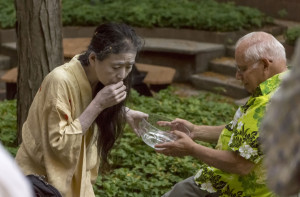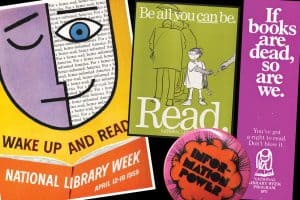
Misty Copeland rose from a difficult childhood to become a ballet prodigy. The first African-American principal dancer for American Ballet Theatre (ABT), Copeland’s efforts to lead and affect social change through her work and writing make her an ideal choice for honorary chair of this year’s National Library Week (April 8–14), which features the theme “Libraries Transform: Libraries Lead.”
Copeland is author of Life in Motion: An Unlikely Ballerina (Simon and Schuster, 2014); Firebird (Putnam, 2014), with illustrator Christopher Myers, which won the 2015 Coretta Scott King Book Illustrator Award; and Ballerina Body: Dancing and Eating Your Way to a Leaner, Stronger, and More Grateful You (Grand Central Life and Style, 2017). She spoke with American Libraries about reading, writing, and—of course—ballet.
The theme of the 60th annual National Library Week is “Libraries Transform: Libraries Lead.” Throughout much of your career, you’ve been in leadership positions. What does leadership mean to you?
For me, leadership means being understanding, encouraging, and responsible.
What role have libraries played in your life?
As a child, the library was a place to dream, learn, and escape. When you don’t have the means to travel or see possibilities for yourself, you can be transported through books and pushed to use your imagination.
Aside from the obvious physical training that’s required, how do you prepare for different roles?
Reading and research is equally as important to me as rehearsing when preparing for a role. Learning about the time period in which the ballet takes place—what was the mood of that time? What were the supporting characters like and feeling? All of this allows me to understand my part, and how I fit in and interact with those around me.
Do you have a research process for taking on a classic role or existing choreography versus an original piece?
With a classic role, you have the added bonus of being able to research footage or at least photos and reviews of how others before you approached it. With a new work, it depends on how much direction you’re given. It can be a bit more difficult when there’s so much space for interpretation. With newer works, I try to use my own personal experiences and emotions to drive my character.
How do you bring your own influence to your work?
I really try to offer my own perspective, no matter if the role is one I’m re-creating or creating. It helps me to really connect and feel that what I’m doing is authentic and realistic.

You’ve written three books—an illustrated children’s book (Firebird), a memoir (Life in Motion), and a health and fitness guide (Ballerina Body). What inspired you to write?
My fear of speaking as a child really was the motivating force that drove me to write as a child. It was the only real way I felt I could express myself. That was before I started dancing. But even after I began ballet classes, I continued to write everything I was learning and experiencing. I’ve kept journals for more than half of my life.
How did you approach writing in such different genres and for different audiences?
I tried to go back in time with Firebird and Life in Motion and go inside who I was then. My journaling helped tremendously to go back and read what I was thinking and feeling. Ballerina Body was a lot of what I was going through as I was writing. And for some of it, I also relied on my more recent journals. I revisited the journey I took in learning how to take care of my body, diet, and dealing with injury and recovery, as well as the many amazing quotes and stories I’ve written down from mentors throughout my career.
Many children view you as a role model, especially after you wrote Firebird. What do you tell kids about achieving their dreams?
I tell them to not allow their minds and dreams to have limits. If I was limited in allowing myself to believe I could be where I am today, I wouldn’t have had the motivation and drive to get here.
What are you reading now?
I’m finishing up We Were Eight Years in Power: An American Tragedy by Ta-Nehisi Coates as well as rereading Gelsey Kirkland’s memoir, Dancing on My Grave.
What projects are you working on for 2018?
I will be on tour with ABT over the next couple of months, traveling throughout the US and Asia. Our spring season at the Metropolitan Opera House is one of my favorite times of year! I’m working on the very early stages of a new children’s book, which is extremely exciting. In November, Disney’s movie The Nutcracker and the Four Realms will be released.


